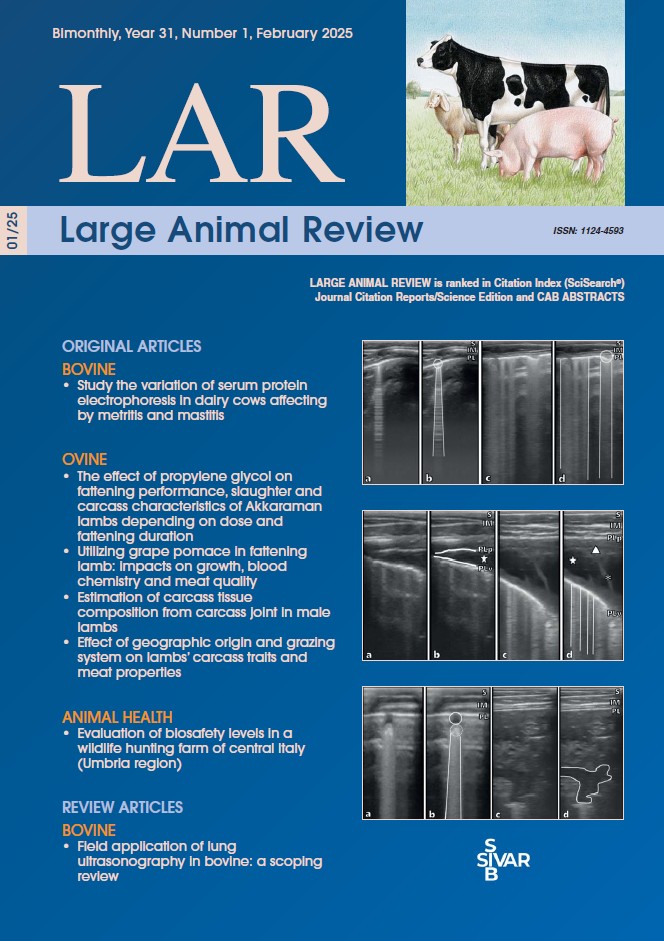Field application of Lung Ultrasonography in bovine: a scoping review.
Abstract
Bovine respiratory disease (BRD) is considered one of the most expensive diseases in the cattle farming worldwide affecting both beef and dairy production. This disease is primarily responsible for increased veterinary costs, treatment expenses, reduced productivity, and, in severe cases, the culling of affected animals. Timely and accurate diagnosis is crucial for effective management and prevention of BRD-related losses. The difficulty in diagnosis based on clinical signs of the animal determines the need to introduce new diagnostic methods. Lung ultrasonography (LUS) has emerged as a valuable, non-invasive, and quick tool offering numerous advantages. It allows for real-time, dynamic evaluation of the lung tissue, providing detailed insights into the presence of pathological changes.
This article provides a comprehensive overview of the practical application of LUS in the diagnosis of BRD in cattle. LUS is performed using linear or convex probes, equipped with high or middle frequency transducers. The lung can be investigated from the 1st to the 10th intercostal space on the right and from the 2nd to the 10th on the left, with differences in size and age of the animal. Several alterations and artefacts can be observed in pathological conditions: comet-tails, B-lines, consolidation, fluid alveolograms and bronchograms. These signs provide valuable information on the extent and severity of lung lesions, which can be used to assign an ultrasonography score to the animal. The two ultrasound scoring systems proposed below allows to discriminate between healthy and diseased animals, guiding the decision-making process for both treatment and management strategies. Additionally, routine ultrasound screening and follow-up assessments offer valuable insights into the progression of the disease, enabling practitioners to monitor the effectiveness of treatments and make timely adjustments to therapy. Overall, LUS represents a promising diagnostic approach that enhances the ability to manage BRD in cattle efficiently, improving animal health and welfare, and minimizing economic losses in the livestock industry.


